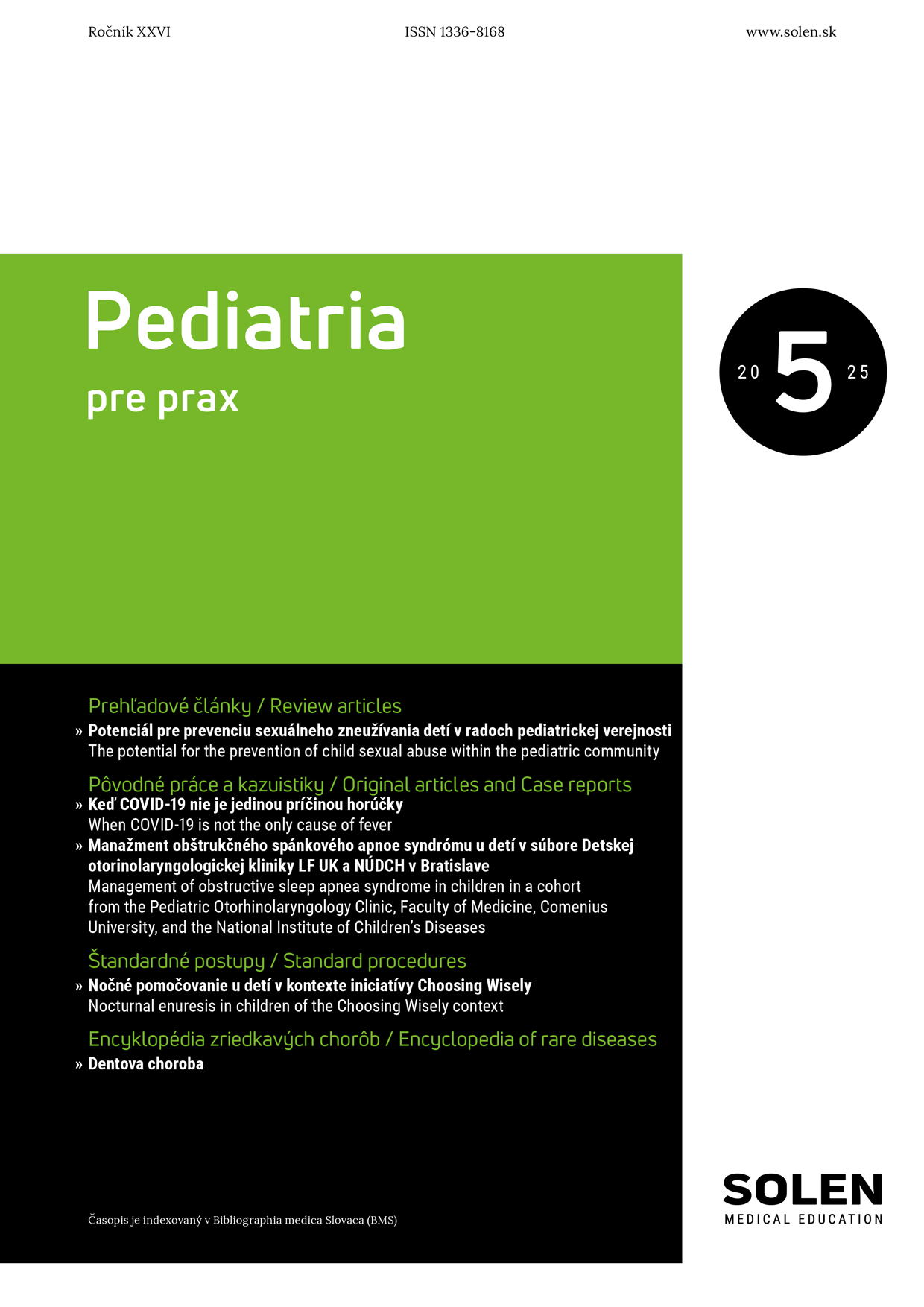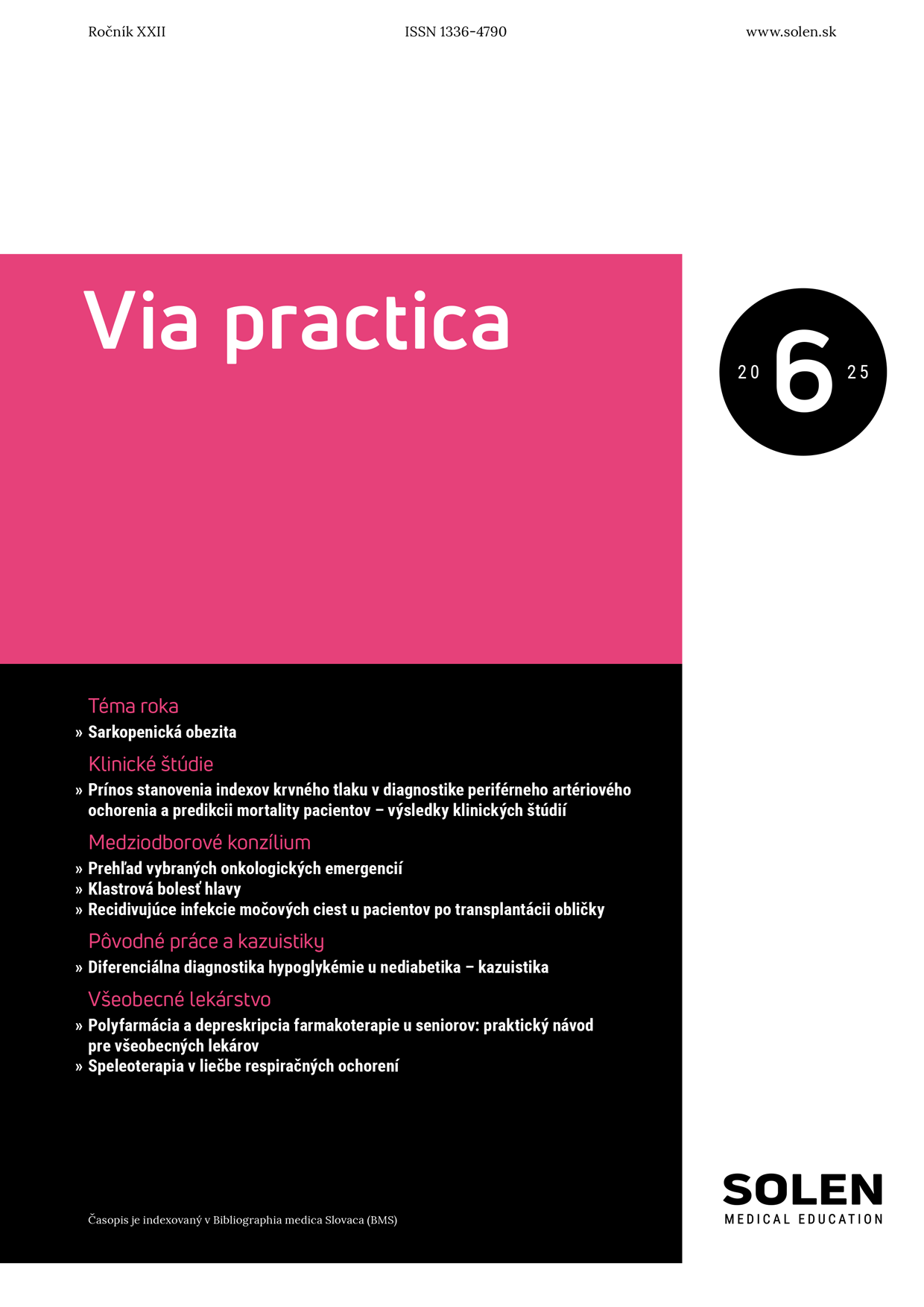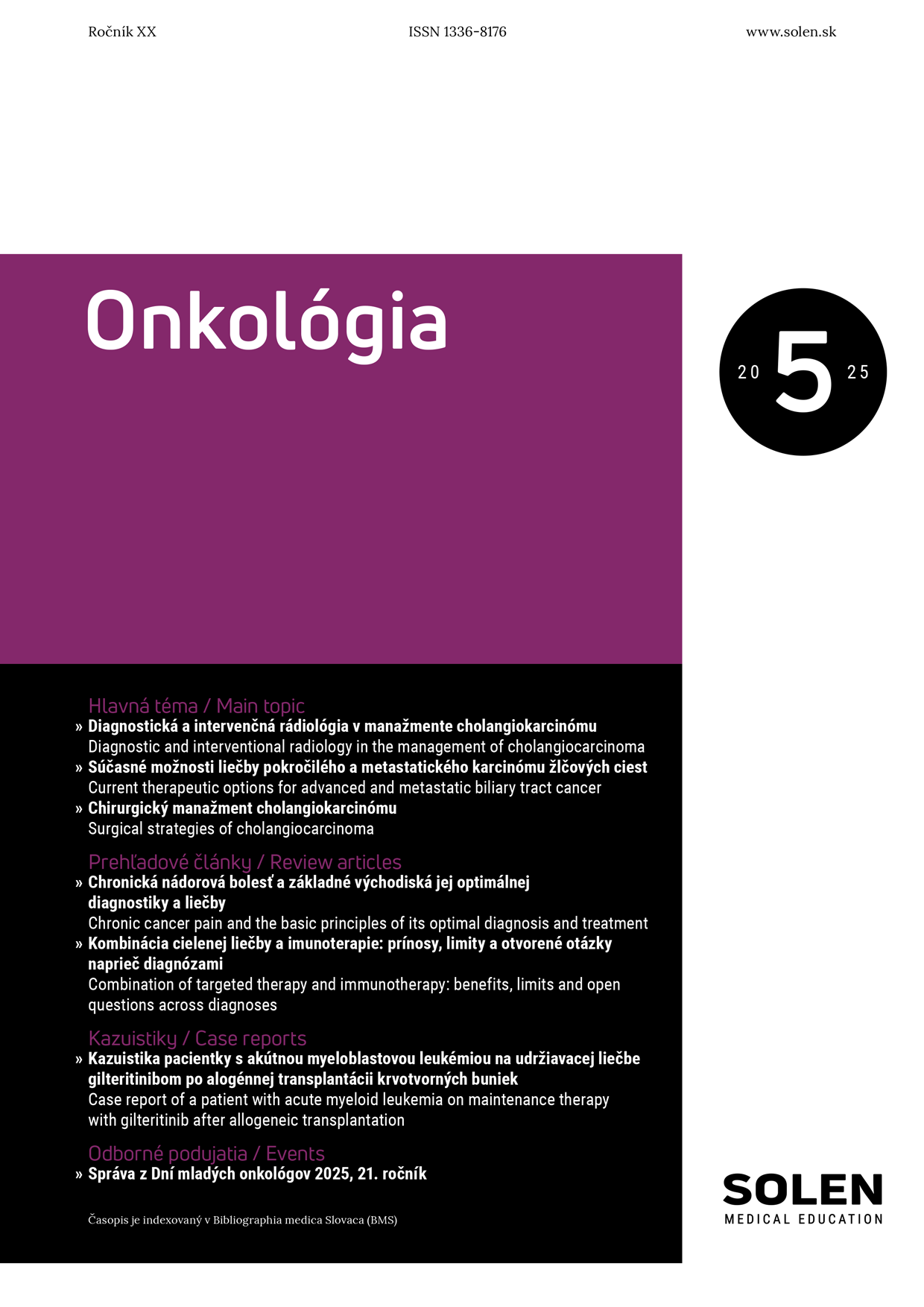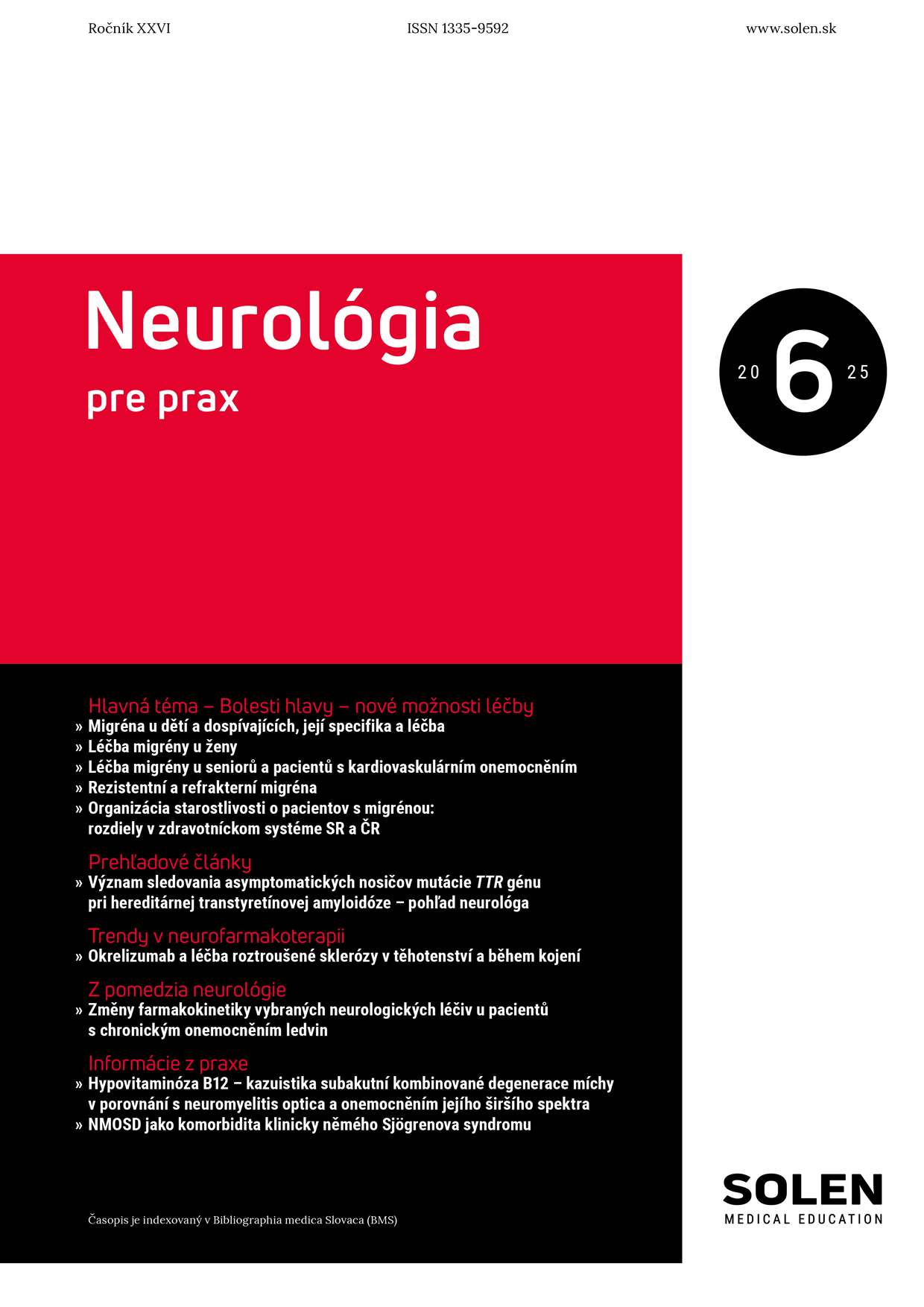Neurológia pre prax 3/2011
Temporální arteriitida – akutní onemocnění vyžadující neodkladnou péči
MUDr. Pavel Diblík, MUDr. Pavel Kuthan, MUDr. Petr Sklenka, MUDr. Aneta Klímová
Temporální arteriitida (TA) je zánětlivá vaskulopatie starých lidí. Neurologické příznaky zahrnují bolesti hlavy, poruchy paměti a demenci. K očním projevům patří náhlý a nevratný, většinou výrazný pokles zrakových funkcí; k celkovým příznakům patří únavnost, napětí v oblasti spánku, noční pocení, hubnutí, klaudikační bolesti při žvýkání a při chůzi, bolesti svalů. Včasnost diagnózy je zásadní pro zahájení léčby, jejíž opožděné nasazení může být i příčinou slepoty. Klinicky jde o vysoké a jinak nezdůvodněné hodnoty FW, ev. CRP. Diagnózu definitivně potvrdí histopatologické vyšetření a. temporalis superficialis. Základním kamenem léčby je kortikoterapie. Aktivitu monitorujeme pomocí hodnot FW. Nemocné doživotně dispenzarizujeme a chronická kortikoterapie je velmi často trvalá. Její neuvážené vysazení může mít pro pacienta fatální důsledky.
Kľúčové slová: temporální arteriitida, Morbus Horton, obrovskobuněčná arteriitida, FW, kortikoterapie, náhlá slepota.
Temporal arteritis – an acute condition reguiring emergency care
Temporal arteritis (TA) is an inflammatory vasculopathy of old people. Neurologic manifestations include headaches, memory disturbances, and dementia; from the ophthalmologic point of view, it is sudden and irreversible decrease or loss of visual functions. The systemic manifestations include fatigue, scalp tenderness, night swelling, loosing the weight, intermittent claudication during mastication or walking, and pain of the muscles. The early diagnosis is mandatory for the beginning of the treatment; its delay may be also the cause of blindness. Clinically, the diagnosis is based on high, and otherwise without other reasons, ESR, or CRP as well. Definitely, the diagnosis is confirmed by histopathological examination of the superficial temporal artery biopsy specimen. The cornerstone of the treatment is the corticosteroid therapy. The activity of the disease is monitored by means of the ESR values. It is necessary to follow-up the patients until the end of their life and the chronic corticotherapy is very often lifelong necessity. Ill-considered withdrawn from steroids, may have fatal consequences for the patient.
Keywords: temporal arteritis, giant-cell arteritis, Horton’s disease, ESR, corticotherapy, sudden blindness.

















